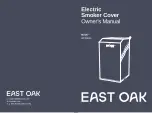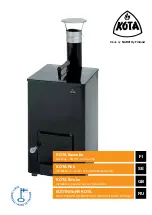
- 4 -
VII. Precautions
1. A detector can not share an address with other equipment in a single bus circuit, or else an
address conflict may occur.
2. Never dismount the protective cover delivered with the detector too early after the field
installation and before the use of the detector, or else the detector may be contaminated.
3. The protection area and quantity of the detectors should comply with relevant provisions in
GB50116-98
Code for Design of Automatic Fire Alarm System
and GB50166-2007
Code for
Installation and Acceptance of Fire Alarm System
.
VIII. Maintenance
Warning: Before conducting maintenance for detectors, inform the related management
department that the monitoring will be stopped temporarily when the system maintenance.
Meanwhile, disable the logic control function of the area or system to be maintained to avoid
unnecessary alarm linkage. After the test, inform the management department to restore the
normal functions of the system.
1.
For a detector, at least semi-annual tests should be done according to related provisions of
GB50166-2007
Code for Installation and Acceptance of Fire Alarm System
; for a detector that has
been installed and used, it is recommended to have it cleaned and maintained once every two
years.
2.
Operating environment has a great influence on the performance of the detector. If the detector is
installed and used in a place where its normal use is easily affected by dust, high wind speed and
other factors, its maintenance period should be shortened.
3.
If a detector fails due to a material defect or a manufacturing process defect under normal
conditions of use in one year following the date of its delivery, we shall repair or replace it for free.
However, the faults of the detector due to artificial damage, improper use, or authorized adjustment,
reconstruction or disassembly are not covered in the guarantee and we shall assume no
responsibilities for any the consequence thereby caused.
4.
We may provide paid repair service for products with any faults beyond the guarantee range. If you
have such products that need repair, please contact us. When sending such a product to us for
repair, you are expected to provide some important information about the product, such as the
phenomenon and possible cause of the product fault, so that we can find out the cause of the fault
in the shortest time and so the information may be used as a reference in our future product
development and improvement.
IX. Fault analysis and troubleshooting
Fault
Possible cause
Troubleshooting method
Remarks
The detector can
’t be coded.
The internal circuit is damaged.
Send the detector back to the
factory for repair.
The detector can
’t be logged
into normally.
The detector has no address or
has a coincident address.
Recode the detector address.
The detector reports a fault after
login.
The sensor has failed.
Send the detector back to the
factory for repair.
The
labyrinth
is
seriously
contaminated.
Clean the labyrinth of the detector.
The detector reports a fire alarm
after login.
There is a great deal of smoke
dust or steam in the room.
Log in again after the smoke, dust
or the steam is eliminated.
The internal circuit has failed.
Send the detector back to the
factory for repair.
The
labyrinth
is
seriously
contaminated.
Clean the labyrinth of the detector.
The detector cannot operate
normally after being powered
up.
The indicator or the internal
circuit is damaged.
Send the detector back to the
factory for repair.
The contact with the base is
poor.
Inspect and reinstall the base.
The detector can
’t send out fire
alarm signal during an alarm
test.
The internal circuit is damaged.
Send the detector back to the
factory for repair.






















